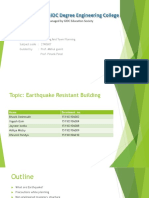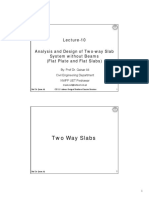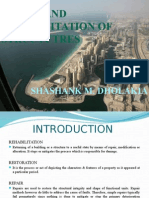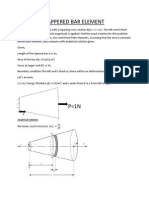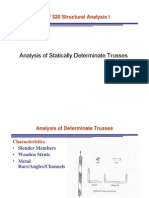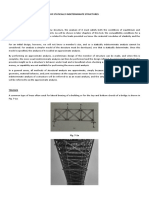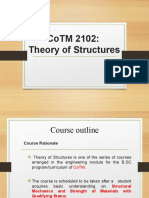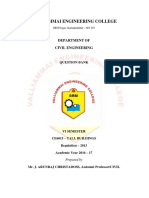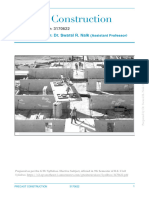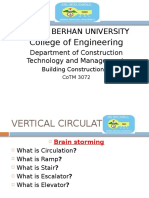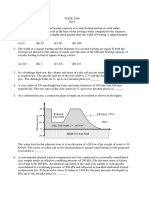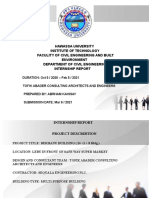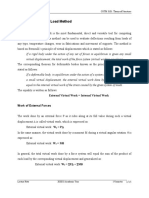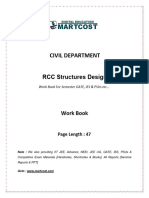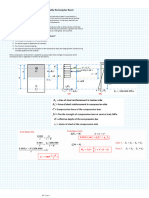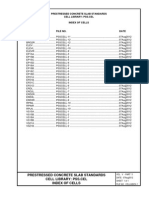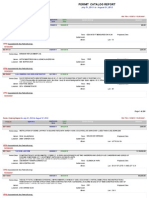Introduction to RCC
E. Lalitha Reddy
Introduction to RCC
Lecture 1
�Introduction to RCC
Structural Analysis
Analysis Designing
SM, TOS RCC, SS, PSC
Resultant (Stress, Fix Dimensions
Strain) based on designed
Forces (SF, BM, forces.
AF, T)
E. Lalitha Reddy
Introduction to RCC
Lecture 1
�Introduction to RCC
Components
• Fine Aggregates
• Coarse Aggregate
• Cement
• Reinforcement
• Water
Particle size distribution of aggregates by sieve analysis
E. Lalitha Reddy
Books to refer: 1. Reinforced Concrete Structures by A.K.Jain : 2. Reinforced Concrete Structure by Syal & Goel : RCC Code book IS 456:2000 Introduction to RCC
Lecture 1
�Introduction to RCC
Components
• Cement
• Grades - (M20, M25, M30 etc.)
• Concrete
• Grades
• Compressive strength – Strength of the concrete
• Characteristic Strength
• Tensile strength
• Durability
• Creep
• Shrinkage
• Unit weight
• Modular Ratio
• Poisson’s ratio
E. Lalitha Reddy
Books to refer: 1. Reinforced Concrete Structures by A.K.Jain : 2. Reinforced Concrete Structure by Syal & Goel : RCC Code book IS 456:2000 Introduction to RCC
Lecture 1
�Types of RCC
Pre cast
• Specific shapes
• High quality architectural products, Great accuracy.
Construction
• Reinforcement – Conventional or Pre-stressed.
• Pre cast Manufacture
• In situ • Casting beds, reinforcement, concrete, vibrated, cured.
• Pre stressed Examples
• Post stressed • Slab, decks, beams, wall panels, load bearing walls,
Connection
E. Lalitha Reddy
Books to refer: 1. Reinforced Concrete Structures by A.K.Jain : 2. Reinforced Concrete Structure by Syal & Goel : RCC Code book IS 456:2000 Introduction to RCC
Lecture 1
�Types of RCC
In Situ
• At the building site.
• Certain elements cannot be precast & can only be cast in situ.
Construction
General considerations
• Pre cast • Spans, loads, concrete, mix design, transportation, labor, placing, curing.
• In situ Advantages
• Pre stressed • Easy transportation, flexible geometric shapes, changes in the plan, monolithic.
• Post stressed Disadvantages
• Environment, Curing time, Skill labor, more temporary work, complex process.
E. Lalitha Reddy
Books to refer: 1. Reinforced Concrete Structures by A.K.Jain : 2. Reinforced Concrete Structure by Syal & Goel : RCC Code book IS 456:2000 Introduction to RCC
Lecture 1
�Advantages of RCC: Dis advantages of RCC:
• Reinforced Cement Concrete has good • Heavy load structures
compressive stress (because of concrete). • Non recyclable
• RCC also has high tensile stress (because of • Weak architectural design flexibility
steel).
• Larger area is occupied
• It has good resistance to damage by fire and
weathering (because of concrete). • Lower tensile strength not recommended in
earth quake zones.
• RCC protects steel bars from buckling and
twisting at the high temperature. • Seasonally operational.
• RCC prevents steel from rusting.
• Reinforced Concrete is durable.
• The monolithic character of reinforced
concrete gives it more rigidity.
• Maintenance cost of RCC is practically nil.
E. Lalitha Reddy
Books to refer: 1. Reinforced Concrete Structures by A.K.Jain : 2. Reinforced Concrete Structure by Syal & Goel : RCC Code book IS 456:2000 Introduction to RCC
Lecture 1
�Types of structures
• Load Bearing
• Foundation
• Walls
• Columns
• Beams
• Slabs
• Framed structure
• Foundation
• Columns
• Beams
• Slabs
E. Lalitha Reddy
Introduction to RCC
Lecture 1
�Functions of Footings
• To distribute weight of the structure over large area.
• To prevent unequal settlement
• To provide level surface for the structure
• Prevent undermining
• Stability against sliding and overturning
• Minimize distress against soil movements
E. Lalitha Reddy
Introduction to RCC
Lecture 1
�Foundations
Foundation
Shallow Deep
D<B D>B
Spread Pile, friction/ bearing
Isolated Coffer dam
Combined Caissons
Strap
Grillage
Matt or Raft
E. Lalitha Reddy
Introduction to RCC
Lecture 1
�Types of Foundations:
Plans and cross
sectional views
of Structural
members
E. Lalitha Reddy
Introduction to RCC
Lecture 1
�Types of Foundations:
Plans and cross
sectional views
of Structural
members
E. Lalitha Reddy
Introduction to RCC
Lecture 1
�Foundations:
INCORRECT COLUMN
BARS
STARTER
NATURAL
BARS
G.L
COVER TO
STARTER
Lb
3” SIDE COVER Ldt
Min.300
Ldt COVER50mm
IF p.c.c below or
CORRECT 75mm
E. Lalitha Reddy
Introduction to RCC
Lecture 1
�Foundations:
DETAILING OF ISOLATED FOOTING:
Reinforcement Cover:
The minimum thickness to main reinforcement in footing should not be less than
50mm f footing is in contact with earth surface directly, and 40mm for external
exposed face such as surface levelling PCC. If surface levelling is not used, then it is
required to specify a cover of 75mm to cover uneven surface of excavation. For raft
foundation, the minimum cover to reinforcement is 75mm whether resting on PCC or
directly on earth surface.
Minimum reinforcement and bar diameter:
The minimum diameter for main reinforcement should not be less than 10mm.
Detailing method of Isolated Footing:
It is desirable foundation should be detailed in both plan and elevation in drawings.
The isolated footing are generally square or rectangular in plan based on structural
requirement and forces acting on the column. But circular or other shapes can also be
used for isolated footings.
E. Lalitha Reddy
Introduction to RCC
Lecture 1
�Stairs:
RCC Alignment
E. Lalitha Reddy
Introduction to RCC
Lecture 2
�Slabs:
One Way Slab:
Long Span/ Short Span ≥ 2
Two Way Slab:
Long Span/ Short Span < 2
E. Lalitha Reddy
Introduction to RCC
Lecture 2
�For all the standard dimensions, spans, Spacing, and rules of designing and detailing RCC can be found
in IS 456:2000 (Code book for Plain & RCC)
E. Lalitha Reddy
Introduction to RCC
Lecture 2

